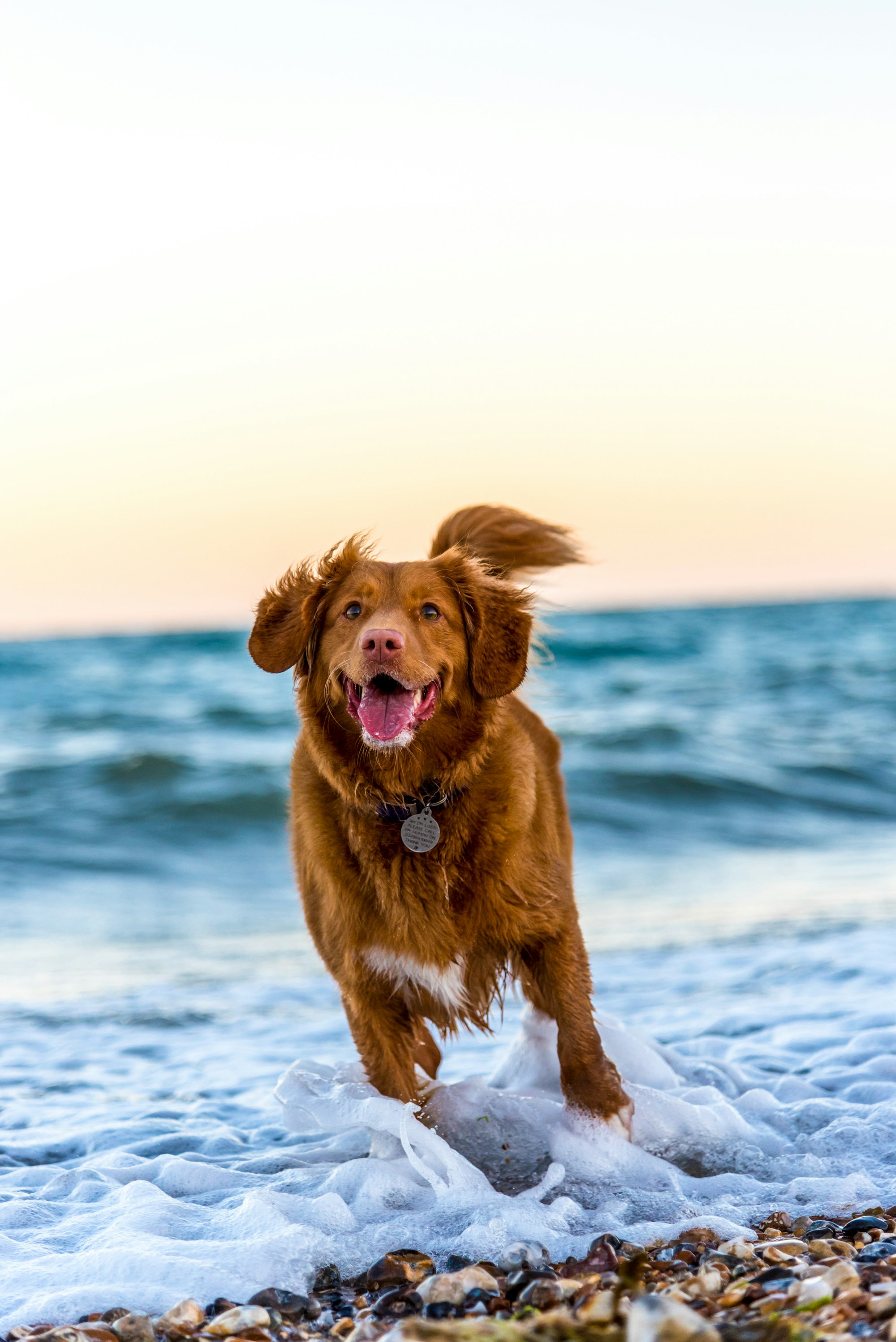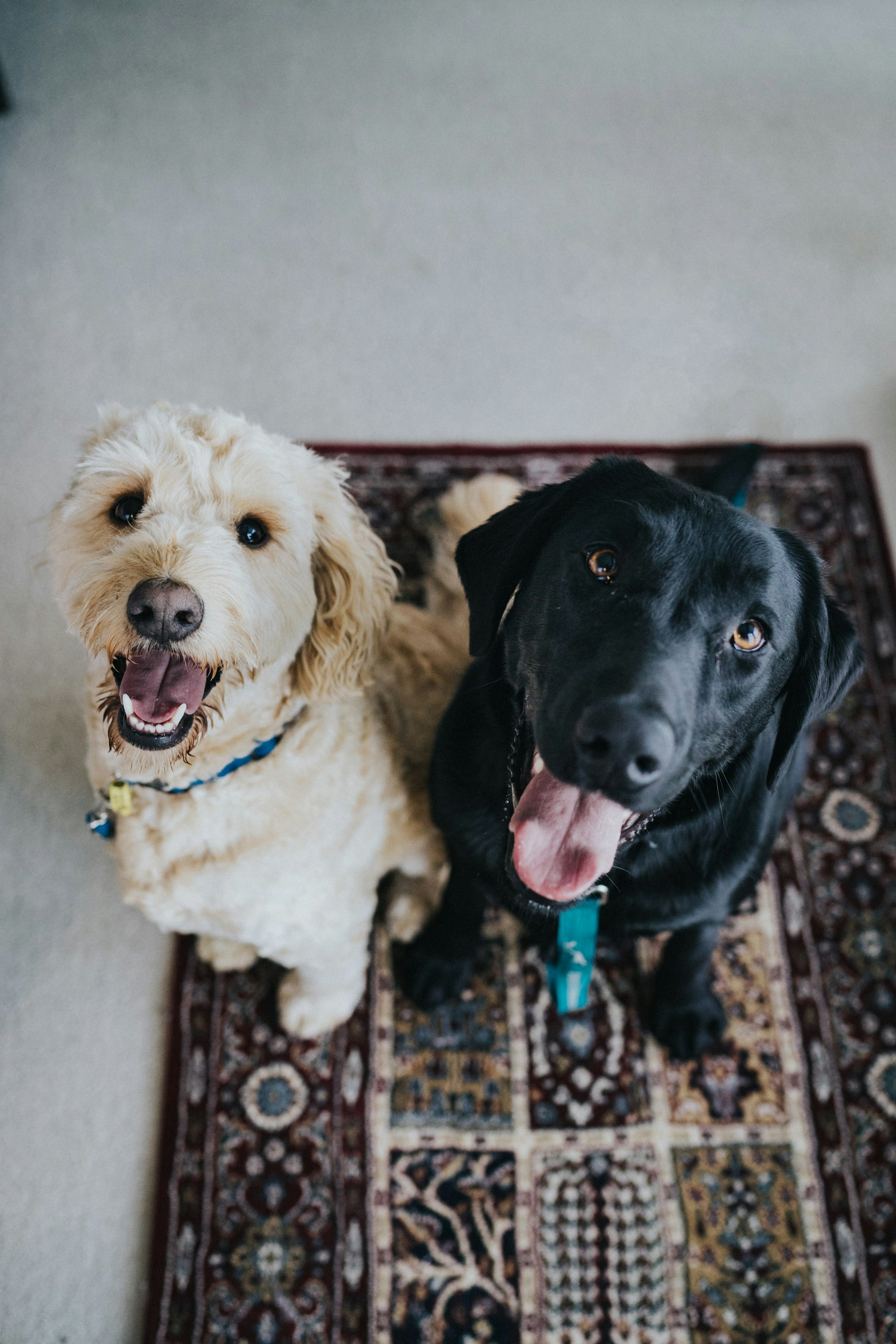Ingestion issues in dogs can be terrifying. One moment, your playful fur buddy is happily bouncing around; the next, they've swallowed something potentially dangerous. It's critical that you, as a dog owner, know how to make a dog throw up safely.
Real-Life Scenario: A Canine Ingestion Issue
Imagine this: You're on your routine walk with your best buddy, a sprightly golden retriever named Charlie. Charlie has a beautiful, shiny dog coat color, indicative of his great health. Suddenly, Charlie sniffs something and, faster than you can react, gobbles it up. Panic sets in. You have no idea what Charlie just swallowed, but you know it could be harmful.

The Right Time to Induce Vomiting in Dogs
When such situations arise, you might wonder, "how often do vet visits need to involve such issues?" While it's ideal to get a professional vet involved immediately, it isn't always feasible. So, when should you induce vomiting in your dog?
Inducing vomiting is often the best course of action if your dog has ingested a potentially harmful substance, such as:
- Certain human medications
- Rodenticides or insecticides
- Certain foods toxic to dogs like chocolate or xylitol
- Some types of plants or flowers
However, some items should not be vomited up due to the risk of further harm:
- Acidic or alkali substances
- Sharp items
- Petroleum products
The Right Way to Make a Dog Throw Up Safely
Now that we've established when it's appropriate to induce vomiting, let's talk about how to do it safely. The commonly used method involves hydrogen peroxide. Here's how you can make your dog vomit safely at home:
- Measure 1 ml of 3% hydrogen peroxide per pound of your dog's weight. The maximum dose should not exceed 45 ml, regardless of the dog's weight.
- Using a syringe or turkey baster, administer the dose orally.
- If your dog doesn't vomit within 15 minutes, you can repeat the process once, but no more.
- If the dog still doesn't vomit, it's time to rush to the vet.
It's important to remember this method is not foolproof and does not replace professional vet advice.
Dog Care Tips: Prevention Is Better Than Cure
When it comes to ingestion issues in dogs, prevention is undoubtedly better than cure. An excellent way to keep your dog's curiosity under control is to engage them with puzzle toys. These toys can keep your furry friend mentally stimulated, reducing the likelihood of them exploring and swallowing harmful substances.
Alongside puzzle toys, another fantastic item to keep your dogs entertained is a flirt pole. With a flirt pole, you can engage your dog in stimulating exercises, keeping their attention away from potentially harmful ingestible.
A Comprehensive Dog Health Plan
Ensuring your dog gets how much exercise they need is another crucial element in preventing ingestion issues. Regular exercise can reduce your dog's destructive tendencies, including harmful chewing habits.
Additionally, be aware of the signs of allergies in your dog. Some dogs might ingest certain items due to an allergic reaction, causing them to seek relief by eating inappropriate substances.
Emergency Dog Care: Prepare for The Unexpected
Ingestion issues can be especially terrifying when they happen unexpectedly. Imagine, you've just come home after a long day at work. You see your dog, Max, sitting innocently in the middle of a pile of torn plastic. Max looks perfectly content after his exploration, but your heart sinks. He's just eaten something he shouldn't have. This is the type of situation where knowing how to make a dog throw up safely can be a lifesaver.

The Role of Activated Charcoal in Canine Ingestion Issues
Let's consider another scenario. Perhaps your dog, in his mischievous explorations, has ingested a harmful substance that isn't safe to vomit up. What should you do then?
In such cases, activated charcoal can be your saving grace. Activated charcoal helps to prevent the toxin from being absorbed into your dog's system. It works by binding the toxins, rendering them harmless and allowing them to pass through the digestive system naturally.
Remember, always consult with your vet before administering activated charcoal, and never attempt to induce vomiting if your dog has ingested a corrosive substance, as it can cause more harm than good.
Recognizing Symptoms of Dog Ingesting Dangerous Items
Knowledge about how to make a dog throw up safely isn't enough. It's just as important to recognize when your dog has ingested something harmful. Some symptoms can indicate ingestion issues, such as:
- Excessive drooling
- Loss of appetite
- Vomiting
- Diarrhea
- Lethargy
- Abdominal pain
It's important to monitor your dog's behavior closely. Any drastic changes could be a sign of distress and a potential ingestion issue.
The Role of a Vet in Ingestion Issues
While it's possible to handle some ingestion issues at home, a vet plays a critical role in the overall health of your pet. Regular vet visits not only help in keeping track of vaccinations and general health, but they also educate you on what's normal for your dog. That way, you're better equipped to spot any abnormal behavior, including the signs of potential ingestion issues.
Consider this: A friend of mine has a curious pug named Bella. Despite how much exercise Bella got, her curiosity would often get the better of her. One day, Bella managed to get into a stash of chewing gum. My friend was in a panic. She knew the gum contained xylitol, a sweetener that's harmful to dogs.

Luckily, she also knew the importance of quick action. She'd already asked her vet, "how often should a vet be consulted in case of ingestion issues?" The vet had emphasized immediate action in case of any potential toxins. So, she quickly induced vomiting following the guidelines shared by her vet.
Bella was back to her cheerful, playful self in no time. The prompt action saved Bella from a potentially life-threatening situation. This incident highlights the importance of regular vet consultations and being prepared for emergencies.
A Balanced Approach to Dog Health and Safety
Ingestion issues are a common concern for all dog owners. These problems can arise out of nowhere and escalate quickly. As a dog owner, the responsibility falls on you to act promptly and correctly. Whether it's knowing how to make your dog throw up safely, or understanding when it's better not to induce vomiting, you are your dog's first line of defense.
However, the focus should always be on prevention. In fact, most ingestion issues can be avoided with proper care and attention. Ensure your dog has enough mental stimulation, with toys such as puzzle toys and flirt poles. Regular exercise, based on how much exercise your dog needs, is also critical to keep your dog healthy and prevent destructive behavior.
Taking care of a dog is not just about their physical well-being. Pay attention to any potential allergies that might cause discomfort to your pet. Consult your vet regularly to stay updated about your dog's health.
In the end, the journey of being a pet parent is filled with many challenges. But with the right information, a dash of preparedness, and a lot of love, you can ensure your furry companion stays healthy and happy.
It's Not Just About Ingestion: Overall Dog Health Matters
While ingestion issues are indeed a critical aspect of dog health, they're just one part of the bigger picture. Other elements contribute to a healthy and balanced lifestyle for your pet.
Take your dog's diet, for example. Dogs need a well-balanced diet to remain healthy and strong. A good diet also helps in maintaining a vibrant dog coat color, which is a sign of good health. Nutrient deficiencies can lead to dull coats, weak bones, and poor overall health.
And it's not just about food. Exercise plays a crucial role in your pet's health too. Knowing how much exercise your dog needs can keep them fit and active. Regular exercise helps in maintaining a healthy weight, which can prevent a range of health issues, from heart disease to arthritis.
Exploring The Link Between Behavioral Health and Ingestion Issues
Behavioral health also has a significant role to play in ingestion issues. Bored or anxious dogs often indulge in destructive behaviors, which may include chewing and swallowing non-food items. Mental stimulation, like puzzle toys and flirt poles, can keep your pet engaged and curb these behaviors.
Additionally, socialization can significantly impact a dog's behavior. A well-socialized dog is more likely to be calm and less likely to indulge in destructive chewing.
The Role of Training in Preventing Ingestion Issues
Training your dog can also help prevent ingestion issues. Basic commands like "leave it" or "drop it" can be instrumental in preventing your dog from swallowing something harmful.
Moreover, crate training your dog can be beneficial, especially if you can't supervise them all the time. A crate can be a safe haven for your dog, where they can't access potentially harmful substances.
Canine Allergies and Ingestion Issues: Is There a Link?
You might wonder, "Can allergies cause ingestion issues?" While not directly, allergies can indeed lead to behavioral changes in dogs. For example, a dog with food allergies might feel discomfort and start eating grass or other non-food items to soothe their stomach.
Being aware of potential allergies in your dog can help prevent such situations. Regular vet check-ups can help in identifying and managing any allergies effectively.
Bringing in Technology for Dog Safety: The FI Dog Collars
In the era of modern technology, there are smart tools available that can further assist us in taking care of our furry friends. One such tool that stands out is the FI dog collar. But you may wonder, "How does this align with our topic of ingestion issues and overall dog safety?"
FI Dog Collars: A New Age Solution to an Age-Old Problem
The FI dog collar is a high-tech dog collar that comes equipped with GPS tracking. This allows you to keep an eye on your dog's location at all times. If your dog is prone to swallowing inappropriate things, this feature is especially useful.
Consider this: your dog has a penchant for picking up things from the ground during walks. With the FI dog collar, you can track your dog's every move, ensuring they're not sneaking off to explore (and potentially ingest) something harmful.

Exercise Monitoring with FI Dog Collars
Remember when we discussed how much exercise your dog needs? The FI dog collar can help with that too! The collar comes with a feature to track your dog's daily activity and sleep. It helps you keep an eye on whether your pet is getting enough exercise or if they're being too lethargic – which could be a sign of ingestion issues or other health problems.
FI Collar: Aiding in Training and Preventing Ingestion Issues
Training plays a significant role in preventing your dog from swallowing harmful things. The FI dog collar can aid in this aspect as well. With its GPS tracking feature, you can establish a 'safe zone' for your dog. If your dog steps out of this zone, you'll get an immediate notification.
For instance, if you're training your dog to stay away from certain areas of your house where they might find harmful ingestibles, this feature can be particularly useful. The moment your dog crosses into the designated 'no-go' area, you'll be alerted, helping you enforce the training rules consistently.
FI Dog Collars and Health Monitoring
The FI dog collar can also play a part in keeping a check on potential allergies in your dog. The collar tracks your pet's activity and sleep. If you notice any drastic changes in these patterns, it might be due to discomfort caused by allergies. Recognizing these signs early can lead to prompt medical attention, preventing further complications.
Conclusion:
To conclude, knowing how to handle ingestion issues and maintaining overall dog health are crucial responsibilities of a pet parent. From understanding when and how to induce vomiting safely, recognizing symptoms of ingestion issues, regular vet visits, to ensuring a balanced diet, mental stimulation, and enough exercise, every aspect plays a role in your pet's well-being.
Furthermore, leveraging modern technology like the FI dog collar provides an added layer of safety, helping monitor location, exercise, and potential allergies. By embracing knowledge and technology, we can assure our furry friends a happy, healthy, and safe life.
FAQs
- What Should I Do If My Dog Swallows Something Harmful?
If your dog swallows a harmful substance, you should consult with a vet immediately. They may guide you on how to induce vomiting safely at home or ask you to bring your dog in for treatment, depending on the substance ingested. - How Can I Safely Make My Dog Throw Up?
To make your dog vomit safely, use 3% hydrogen peroxide. Administer it orally at a dosage of 1 teaspoon per 5 lbs of body weight, up to 3 teaspoons. This process should be guided by a veterinarian. - When Should I Not Induce Vomiting in My Dog?
Vomiting should not be induced if your dog swallowed sharp objects, corrosive substances, or petroleum-based products. Also, dogs who are lethargic, unconscious, or having seizures should not have vomiting induced. - What Are The Signs That My Dog Has Ingested a Harmful Substance?
Signs can include vomiting, diarrhea, drooling, changes in pupil size, loss of appetite, changes in behavior, and abdominal pain. - Can Regular Vet Visits Prevent Ingestion Issues in Dogs?
Regular vet visits are crucial as they help monitor your dog's overall health, including dietary habits, which can contribute to preventing ingestion issues. - How Much Exercise Does My Dog Need to Prevent Destructive Behaviors?
The amount of exercise a dog needs can vary based on their age, breed, and health. Generally, dogs should get between 30 minutes to 2 hours of exercise each day. Regular exercise helps in preventing destructive behaviors, including chewing on non-food items. - How Can Training Prevent My Dog from Swallowing Non-Food Items?
Training your dog to follow commands like "leave it" or "drop it" can help prevent them from swallowing non-food items. Regular training can teach dogs what they can and can't chew or eat. - What is a FI Dog Collar and How Can It Assist in Monitoring My Dog's Health and Safety?
A FI dog collar is a smart dog collar equipped with GPS tracking and activity monitoring. It allows you to track your dog's location and activity levels, helping prevent ingestion issues by setting safe zones and aiding in health monitoring. - Can Allergies Lead to Ingestion Issues in Dogs?
While allergies don't directly lead to ingestion issues, discomfort from allergies can cause changes in a dog's behavior, such as eating grass or other non-food items. Regular vet check-ups can help identify and manage any potential allergies. - How Does the FI Dog Collar Aid in Managing My Dog's Health?
The FI Dog Collar helps in monitoring your dog's daily activity, sleep patterns, and location. Any drastic changes in these patterns might be a sign of health issues, such as ingestion problems or allergies, allowing for prompt medical attention.